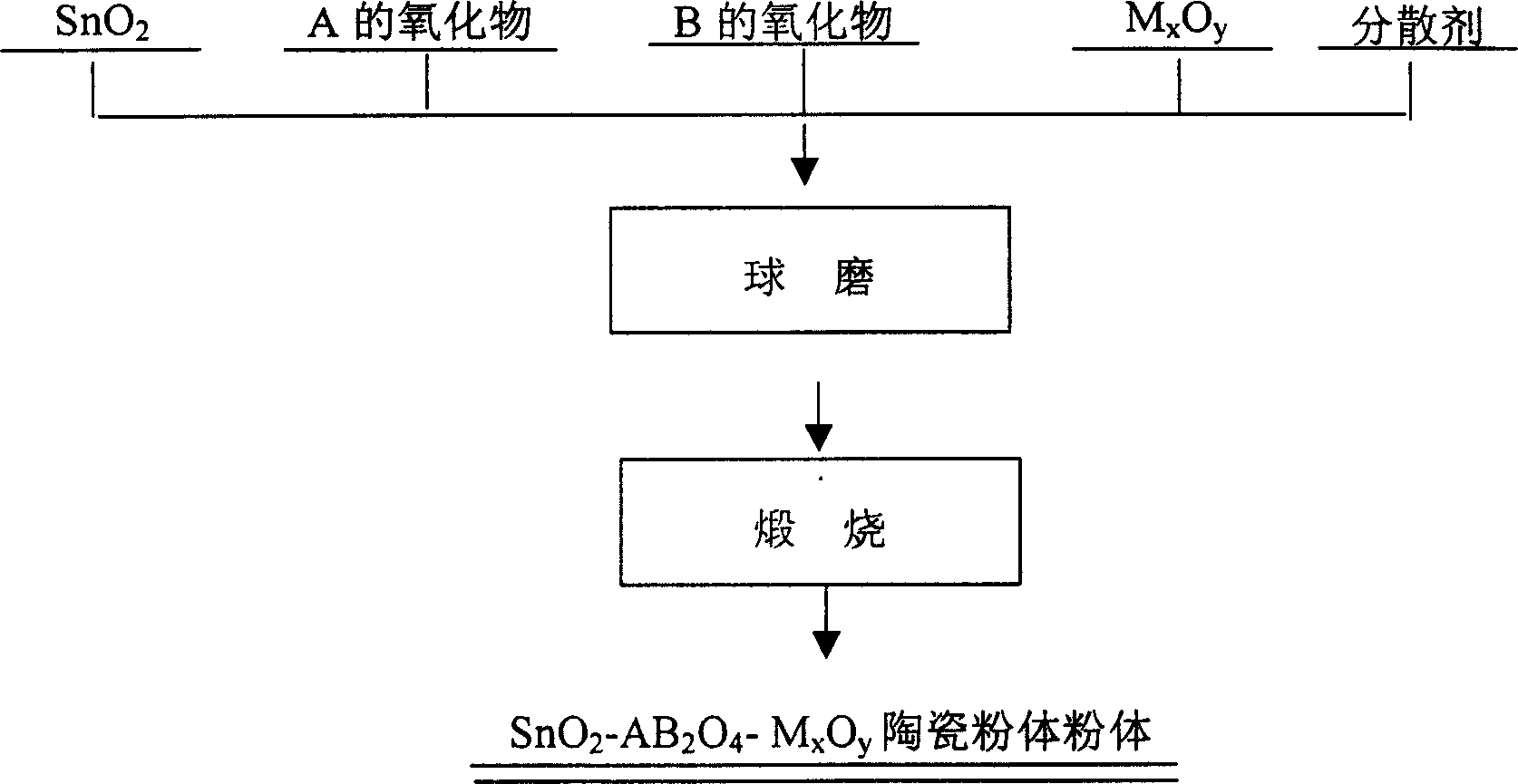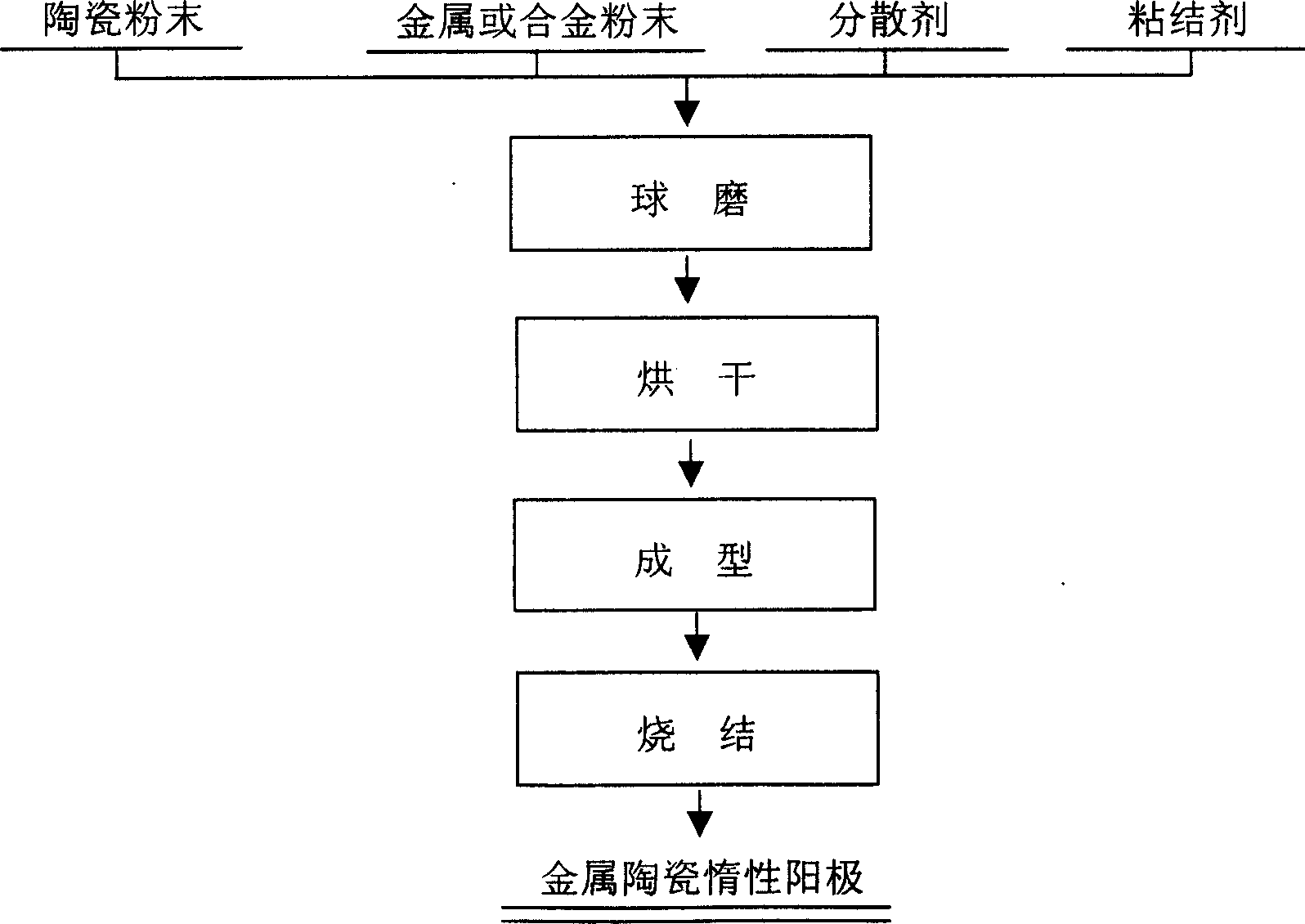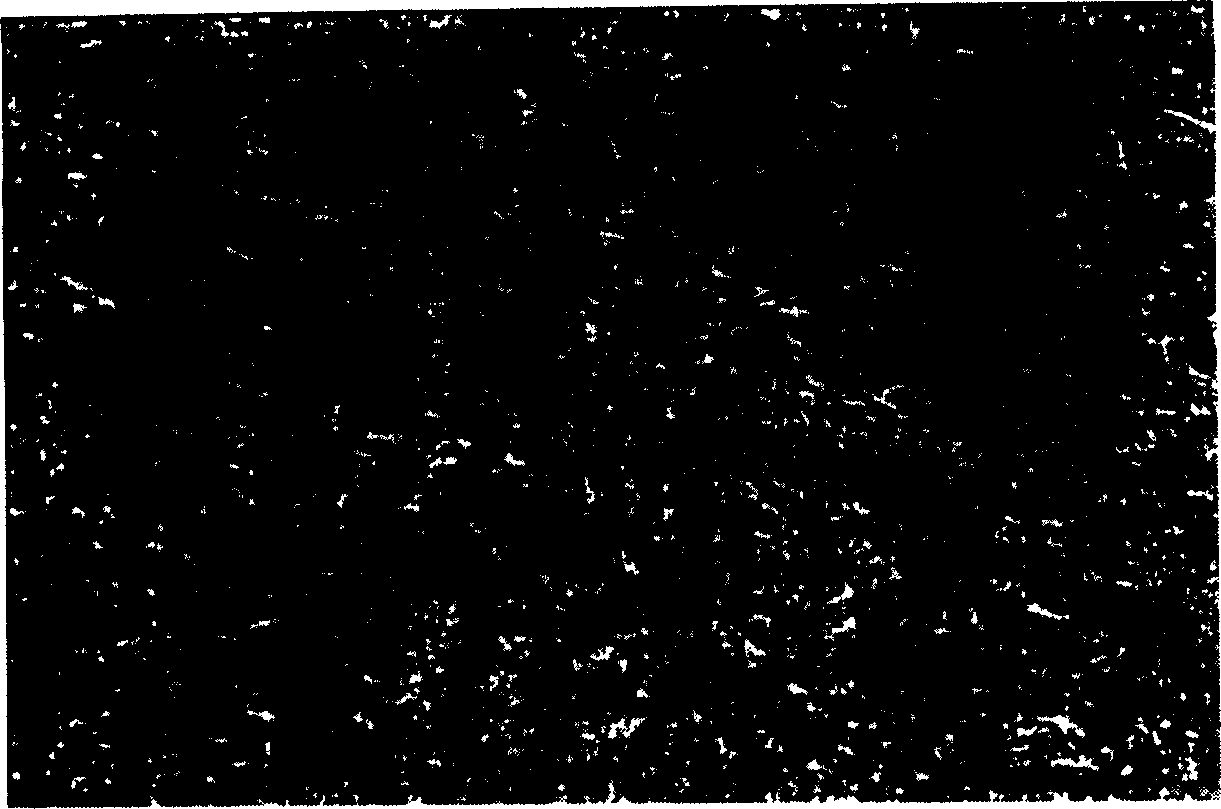Inert ceramet anode for electrolyzing molten salt and its prepn
A cermet, inert anode technology, applied in electrodes, electrolysis components, electrolysis process, etc., can solve the problems of metal phase overflow and uneven distribution, poor thermal shock resistance, poor electrical conductivity, etc. The effect of convenient performance and good sintering performance
- Summary
- Abstract
- Description
- Claims
- Application Information
AI Technical Summary
Problems solved by technology
Method used
Image
Examples
Embodiment 1
[0027] SnO 2 -NiFe 2 o 4 / Ni-Cu-Co cermet inert anode.
[0028] ① Prepare ceramic powder, press figure 1 The technical process is carried out, the raw materials in Table 1 are added to industrial alcohol as a dispersant, ball milled for 8 hours, and calcined at 1200 ° C for 8 hours to obtain ceramic powder with an average particle size of 3.31 μm. X-ray diffraction phase analysis shows that the ceramic powder contains SnO 2 and NiFe 2 o 4 Two phases; the obtained ceramic matrix has good corrosion resistance, has semiconductor properties at the temperature of aluminum electrolysis, and is used as the powder raw material of the ceramic matrix of the cermet inert anode.
[0029] raw material
Mass percentage (%)
SnO 2
50.00
f 2 o 3
36.58
NiO
13.42
[0030] ②Prepare the cermet inert anode, proceed according to the process flow in Figure 2, use industrial alcohol as the dispersant and polyvinyl alcohol as ...
Embodiment 2
[0033] SnO 2 -NiFe 2 o 4 -Sb 2 o 3 / Ni-Cu-Cr cermet inert anode
[0034] ① Prepare ceramic powder, press figure 1The process flow is carried out. The raw materials in Table 3 are treated with industrial alcohol as a dispersant, ball milled for 8 hours, and calcined at 1200°C for 8 hours to obtain ceramic powder with an average particle size of 3.11 μm. X-ray diffraction phase analysis shows that the ceramic powder mainly contains SnO 2 and NiFe 2 o 4 two phases. The obtained ceramic substrate has good corrosion resistance, has semiconducting properties at the aluminum electrolysis temperature, and has good electrical conductivity, and can be used as a ceramic powder raw material for a cermet inert anode.
[0035] raw material
Mass percentage (%)
SnO 2
48.00
f 2 o 3
36.58
NiO
13.42
Sb 2 o 3
2.00
[0036] ②Prepare the cermet inert anode, proceed according to the process flow in Fi...
Embodiment 3
[0039] SnO 2 -NiAl 2 o 4 -CuO / Ni-Cu-Ag cermet inert anode
[0040] ① Prepare ceramic powder, press figure 1 The process flow is carried out. The raw materials in Table 5 are treated with industrial alcohol as a dispersant, ball milled for 8 hours, and calcined at 1300° C. for 8 hours to obtain a ceramic powder with a thickness of 4.11 μm. X-ray diffraction phase analysis shows that the ceramic powder mainly contains SnO 2 and NiAl 2 o 4 two phases. The obtained ceramic matrix has good corrosion resistance, has semiconducting properties at the aluminum electrolysis temperature, and can be used as a ceramic powder raw material for the cermet inert anode.
[0041] raw material
Mass percentage (%)
SnO 2
50.00
Al 2 o 3
27.71
NiO
20.29
CuO
2.00
[0042] ②Prepare the cermet inert anode, proceed according to the process flow in Figure 2, use denatured alcohol as the dispersant and polyvinyl a...
PUM
| Property | Measurement | Unit |
|---|---|---|
| particle size | aaaaa | aaaaa |
| particle size | aaaaa | aaaaa |
| particle size | aaaaa | aaaaa |
Abstract
Description
Claims
Application Information
 Login to View More
Login to View More - R&D Engineer
- R&D Manager
- IP Professional
- Industry Leading Data Capabilities
- Powerful AI technology
- Patent DNA Extraction
Browse by: Latest US Patents, China's latest patents, Technical Efficacy Thesaurus, Application Domain, Technology Topic, Popular Technical Reports.
© 2024 PatSnap. All rights reserved.Legal|Privacy policy|Modern Slavery Act Transparency Statement|Sitemap|About US| Contact US: help@patsnap.com










